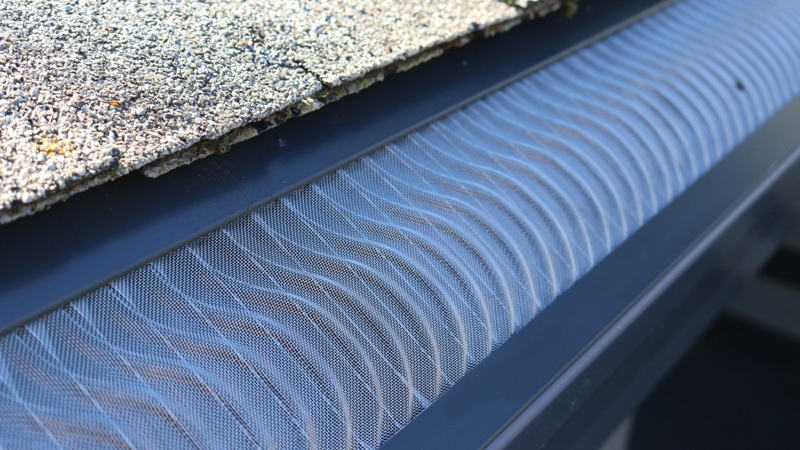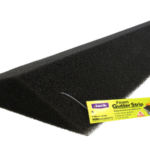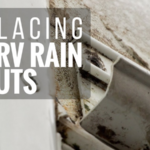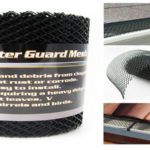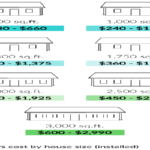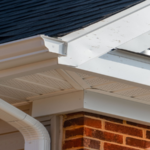A level – This is necessary in order to make sure that your gutters are installed level and will function properly.
A tape measure – This is necessary in order to measure the length of the gutters you will need as well as the length of the downspouts.
A hacksaw – This is necessary in order to cut the gutters to the proper length.
A putty knife – This is necessary in order to apply the sealant around the joints of the gutters.
A ladder – This is necessary in order to reach the gutters and install them properly.
Gutter brackets – These are necessary in order to secure the gutters to the house.
Downspout brackets – These are necessary in order to secure the downspouts to the gutters.
Screws – These are necessary in order to secure the gutter brackets and downspout brackets.
Sealant – This is necessary in order to seal the joints of the gutters and prevent leaks.
Now that you know what tools you need, half the battle is already won. With the right tools, you will be able to install gutters quickly and easily, without any headaches.
Is installing gutters easy?
No, installing gutters is not easy. It requires a lot of time, effort, and precision in order to get the job done right. There are many steps involved in the process, and if any one of them is not done correctly, it can result in a subpar finished product. Gutters are an important part of a home’s exterior, and they need to be installed correctly in order to function properly.
How often do you have to screw gutters?
It really depends on the gutters. Some gutters are made of materials that are more durable than others and can last for many years without needing to be repaired or replaced. However, other gutters are made of less durable materials and may need to be replaced or repaired more often. There is no definitive answer to how often gutters need to be screwed, but it is generally recommended that gutters be checked at least once a year to ensure that they are in good condition and not leaking.
How do you install rain gutters yourself?
- To install rain gutters yourself, you’ll need a few tools and supplies. First, gather together a ladder, a level, a tape measure, rain gutter brackets, screws, and sealant.
- Next, use the ladder to reach the area where you’ll be attaching the rain gutters. Use the level to make sure the gutters are level, and then use the tape measure to mark where you’ll need to drill holes for the brackets.
- Drill the holes for the brackets, and then attach the brackets to the house using the screws. Be sure to use sealant around the screws to prevent leaks.
- Finally, attach the rain gutters to the brackets. Once again, use sealant around the seams to prevent leaks. Allow the sealant to dry completely before testing the gutters by running water from a hose over them.
Do you nail or screw gutters?
It really depends on the type of gutter you have and the type of house. If you have a newer home with vinyl gutters, you can just screw them into the fascia board. If you have an older home with wood gutters, you will probably want to use nails so they don’t pull out.
Do you need tools to clean gutters?
If you want to clean your gutters, you will need some tools. You will need a ladder to reach the gutters, a scoop to remove the debris, and a hose to rinse the gutters clean. You may also need some gloves to protect your hands from the dirt and debris.
Do gutters go under drip edge?
The drip edge is the metal strip that is installed along the lower edge of your roof. The purpose of the drip edge is to help protect your home from water damage by directing water away from the edge of the roof and into the gutters. The gutters are then able to channel the water away from the foundation of the house.
What do you screw gutters to?
There are a few ways to screw gutters to a building. The most common way is to use special brackets that are screwed into the building and have holes for the gutters to slide into. There are also ways to screw the gutters directly into the building, but this is not as common.
What is the gap between drip edge and gutter?
The gap between drip edge and gutter is the space between the edge of the roof and the gutter. This space allows water to run off the roof and into the gutter, and it also allows air to circulate under the roof.
Last Word
If you’re planning on installing gutters, you’ll need a few tools to get the job done. A ladder, some measuring tape, and a few other items will help you get the job done quickly and efficiently. With the right tools, you can get the job done in half the time it would take without them.
